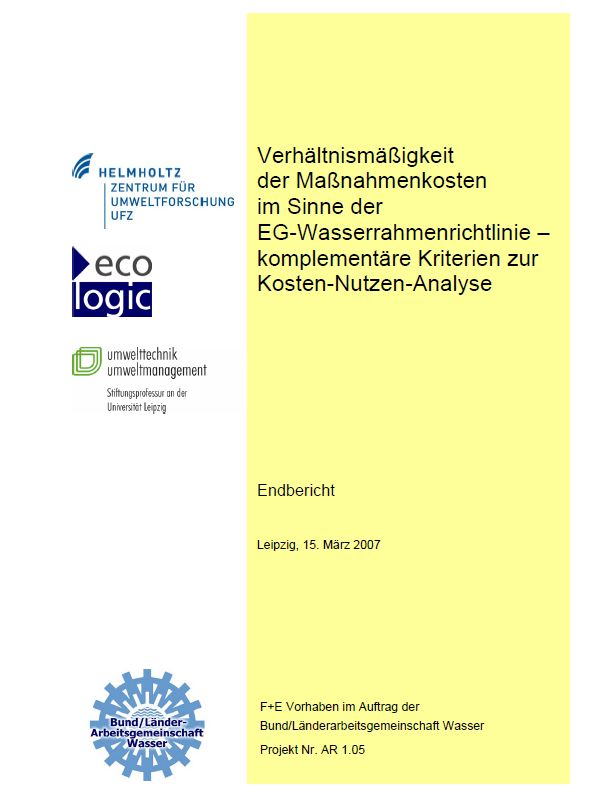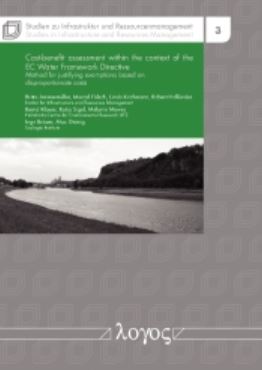Article 4 of the Water Framework Directive (WFD) permits exemptions if the necessary measures for achieving the environmental objectives of the Directive will have disproportionate costs. In this project, a set of criteria and a step-by-step procedure were developed to assess the disportionality of costs in a practicable and quick way. The main focus in this context was on the affordability of measures - when is it possible to conclude that the costs of the measures exceed the accepted party's ability to pay?
Article 4.4. and 4.5 of the Water Framework Directive foresee the possibility of exemptions, if achieving the environmental objectives of the Directive (i.e. good status in all surface and groundwater bodies by 2015) should prove disproportionately costly. In this case, either the deadline for achieving the objectives may be extended, or the objectives may be relaxed permanently. However, as the concept of disproportionate costs is not defined in the Directive nor in economic literature, precise criteria are needed for its practical application.
Against this background, the project aimed to develop a practicable methodology for the assessment of disproportionate costs. The main focus was on the issue of affordability, i.e. whether the costs of measures exceed the ability to pay of the affected (state and non-state) actors, and thus represent a disproportionate burden. Criteria based on a comparison of costs and benefits were explicitly not considered in this project.
The development of a methodology was done in two steps:
- Setting-up criteria to assess disproportionate costs.
- Developing a procedure for the assessment of disproportionate costs.
For the assessment of disproportionate costs, a procedure in four steps was suggested:
1st step: testing for technical feasibility and whether natural background conditions make an achievement of the objectives impossible.
2nd step: Assessment of costs at the water body level (or for groups of water bodies). In this step, screening criteria are used and, if appropriate, criteria for the costs for non-state actors.
3rd step: Assessment of disproportionality at the provincial (Länder) level. Here, criteria to assess disproportionality for state actors are applied.
The 4th step is on the prioritisation of measures, i.e. deciding which measures are taken first, and where. This, however, was not formally part of the project and hence not elaborated in detail.
This method was then tested and refined in an application to two concrete cases – nitrate pollution in groundwater and river continuity / fish migration. In the process, the suggested criteria were further adapated and rendered more precise.
The results of the project are documented in the project report [pdf, 961 KB, German]. Results were also presented at the 2007 Envecon Conference in London in March 2007.




